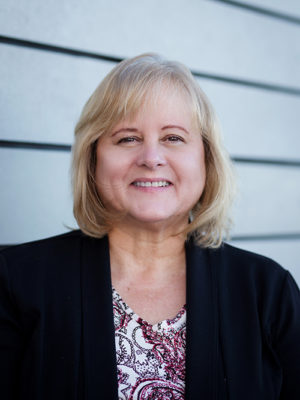Making Cents Of Saving

This article was originally published in the Spring 2019 issue of To Dragma.
by Judy Kuschel, Alpha Rho (Oregon State U)
Summer is approaching, which means graduation for many of our AOII sisters. I enjoyed my chapter experience at Oregon State University, and it gave me a group of women to go to for advice and support when making decisions on classes, professors and careers. We spent hours studying, writing papers and taking tests to prepare for our future careers.
But where was I unprepared? To be honest, I was not fully prepared for what happens after winning that new job—a human resources representative hands you a packet of information that requires a series of quick, but important decisions. Choices often involve health insurance plans, life insurance, disability insurance and retirement plan options. These are demanding decisions with a short deadline. I remember feeling overwhelmed.
Decisions involving a retirement plan can occur at your initial hire, or you may enroll in a plan that allows you to change your contributions or even your investment choices.
So why should you already be thinking about retirement as a recent college graduate entering the workforce? As a woman, you should take retirement planning seriously and consider the key decisions as early as possible. Do not be overwhelmed but use the information as an opportunity to think ahead. Here are some financial planning factors that are especially vital for women in the workforce:
Women Live Longer Than Men
Great news, right? Statistically, women have about five more years of life span when compared to men. And that means more time with those we love or to pursue our dreams. But this also presents a financial challenge because we have to fund five additional years of retirement.
An early start to retirement saving is so important. The earlier that retirement money is invested, the more it has time to grow and compound. Moneyunder30.com charts the power of compound interest. Three investors each save $10,000 a year for varying 10-year periods. One person invests from age 25-35 and stops; the second invests from age 35-45 and stops; the third invests from age 45-55. Each person invests the same amount ($10,000 annually) and hypothetically earns the same return (7 percent annually). Ultimately, though, the money earned ranges from a low of $373,407 for the late saver, to an eye-opening $1,444,969 for the investor who started at age 25.
Waiting to save can mean significantly fewer funds for retirement. So, if we are going to live five years longer, an early start is valuable. If you have delayed this, start now or as soon as possible.
I spent an evening with my 30-something son a couple of weeks ago. We both listen to podcasts about investing, retirement and related subjects. I asked him to attend a meet-and-greet in Seattle with the hosts of one of the podcasts. On the way to the event, my son was lamenting that he did not invest more in his retirement accounts during his 20s, as he could look now and see the effects on his savings. He is still young, but already he has realized that it is easy to look back and rethink our early choices.
The Gender Wage Gap
Studies on the gender pay gap vary, but in general, women make about 80 cents on the dollar when compared to men. The gap is even larger when it comes to women of color according to a 2017 report from the National Partnership For Women & Families. Essentially, women typically make less money than men during their working years. This only amplifies the importance of having a retirement plan, starting early and staying on pace. As one example, my deferred retirement savings plan allowed me the choice of investing a set dollar amount per pay period or a percentage of my pay. I picked the percentage, so each time I received a raise in pay, a portion of the increase would also be invested in my retirement plan.
Time Away From Work
Many women primarily focus on careers and do not take time off for child or family care, but statistics show that women on average spend 11.5 years out of the workforce. By contrast, men average about 16 months out of the workforce according to data from the the Teachers Insurance and Annuity Association. For women, this time out often involves caring for children or perhaps aging parents.
I made the choice to stay home during my son’s early years, and at the time did not think about the long-term effect this would have on my retirement planning. Social security calculates average earnings for the 35 years during which you earned the most, so my child-rearing years1 definitely affected my expected benefit. I also did not contribute to a retirement plan during those years. What a difference I could have made for myself by making retirement investing part of my plan during those years!
My daughter-in-law is currently taking a break from her career to spend more time with my two grandchildren. I have talked to her about the importance of investing in her retirement during those years. We discussed the option of a spousal IRA for this season of her life.
If you find yourself in a similar situation, or if you change jobs and your new employer requires a certain amount of time with the company before you can contribute to a 401k, use that time wisely by paying off debt or saving money as part of an emergency fund. In the event you change jobs, it is important to note your 401k can be transferred to your new company. The money must transfer directly to the new plan and not be issued to you or it would trigger significant taxes and penalties.
Personal Pensions & Spousal Pensions
When planning for retirement, pension plans are an important part of the solution, assuming your company offers one. But there are many reasons to save beyond a pension plan. Such savings can be used during retirement years for additional income, large purchases or unexpected expenses later in life. It also helps when encountering unexpected setbacks. Tragically, companies have gone bankrupt, which can hurt employees who planned on a pension benefit. Often, these situations come as a shock because no one expects a company to fail financially.
Public pensions also vary in their funded status and stability. Some are well-managed and funded, and others are facing uncertain futures. If you have a public pension, ask questions and do some research. If you want to change employers, are you vested in your retirement plan? If you are not vested, which usually takes at least several years, a change may mean you are sacrificing a future benefit from that plan.
In the event of a divorce, some pensions will give benefits to a spouse, but some plans will not give a spousal benefit if you remarry. Finding the answers to those questions is important for planning.
In short, retirement planning has a major impact on our quality of life in our post-working years. What are some for the most important steps we can take?
- Learn about the retirement plan choices at your employer if they are available. Read the materials, ask questions and know the deadlines. Take advantage of any employer match that will boost your personal contributions.
- If your company does not have a retirement plan, look into setting up a retirement account on your own. Several websites can help: NerdWallet and Investopedia are two great resources. Podcasts also are an engaging option for becoming educated on the topic.
- Understand your decisions for retirement planning and evaluate your investing plans at least yearly.
I spend New Year’s Day each year with a valued friend. We each talk about our personal and financial goals. What did we do well in the last year? What changes we plan for the next year? This yearly tradition has deepened our friendship and helps me with my own accountability in meeting my goals.
Wherever you are in your career or education, it is never too early to think about and start planning for your financial well-being later in life.
Retirement Savings Plan Options
What is a 401k?*
A 401k is a retirement savings plan sponored by an employer that allows employees to invest a portion of their paycheck before it is taxed. In doing so, an employee’s taxable income is less. However, you do pay income taxes on contributions upon withdrawl of the money. It is important to note you do not have access to your funds before the age of 59 1/2 or you will be assessed a penalty.
What is a Roth IRA?*
A Roth IRA is a retirement savings plan that allows you to invest a portion of your income after it is taxed. Therefore, no taxes are paid upon withdrawl of the money and you can access at any time as long as you have had the account for five years.
What Is A Spousal IRA?**
A spousal IRA is a strategy that allows a working spouse to contribute to an IRA in the name of a non-working spouse to circumvent income requirements. This creates an exception to the provision that an individual must have earned income to contribute to an IRA.
*Source: Wall Street Journal | **Source: Investopedia
1For our Canadian sisters, it is important to note that the Canada Pension Plan has a special clause that allows people who stay home to raise their children to not include those years in the calculation of their benefits thereby not penalizing parents for choosing to stay home.
Kuschel is the vice president of the Washington Federation of State Employees’ (Council 28 AFSCME) and Chair of the Washington State Investment Board. As Chair, she represents the active members of the Public Employees’ Retirement Systems. She graduated from Oregon State University with a degree in political science.


